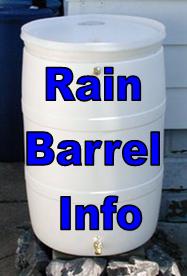Protect Our Streams
How Can I Protect Our Streams?

At Home
-Join A Stream Team!
-Install a Rain Barrel Build a Rain Garden
-Landscape with native drought-tolerant plants that need less water and fertilizer
-Avoid the use of fertilizer and pesticides on lawns & gardens
-When necessary, only use chemical fertilizers and pesticides as directed -- NEVER pour left over supplies down the drain
-Use non-hazardous cleaning products and alternative methods to control pests
-Control soil erosion with terraces and vegetated buffers
-Compost kitchen and yard waste
At School, Work, and in the Community
-Install a Rain Barrel!
-Build a Rain Garden!
-Plant trees, bushes, and other food sources to encourage wildlife
-Incorporate environmental education into the curriculum or job training/orientation
-Adopt a local stream and become a  Stream Team
Stream Team
-Organize staff or volunteers to implement recycling and proper hazardous waste disposal
-Participate in Little Blue River Watershed Coalition Events!
-Donate to watershed education programs
Rain Barrels & Gardens
What is a Rain Barrel?
A Rain Barrel is a container that collects and stores rainwater from downspouts and rooftops for future use watering lawns and gardens. Generally a rain barrel is made using a 55-gallon drum, a vinyl garden hose, PVC couplings, a screen grate to remove debris and keep insects out, and other materials found at most hardware stores.
The LBRWC sells ready-to-use rain barrels!
We sell rain barrels made from food grade 55gl plastic barrels (white, but can be painted)
Barrel assembled--$75
Barrel assembled and installed--$125
Note: See ourArtistic Rain Barrels in many designs
Complement with a Rain Garden!
What is a Rain Garden?
A wonderful way to complement your rain barrel and increase your property's ability to absorb runoff is through a rain garden. Rain gardens can be a fun and easy way to learn about beautiful native plants and also help to improve water quality and reduce flooding. Rain gardens typically absorb 30 percent more water than the same size area of lawn, they are drought resistant, and are less prone to destructive insects and diseases. Rain gardens create a preferred habitat for birds, butterflies and dragonflies. These specialty gardens are versatile — they can be any size or shape, but to maximize their benefit, they should be built in an existing low spot or near the drainage area of a rain barrel.
